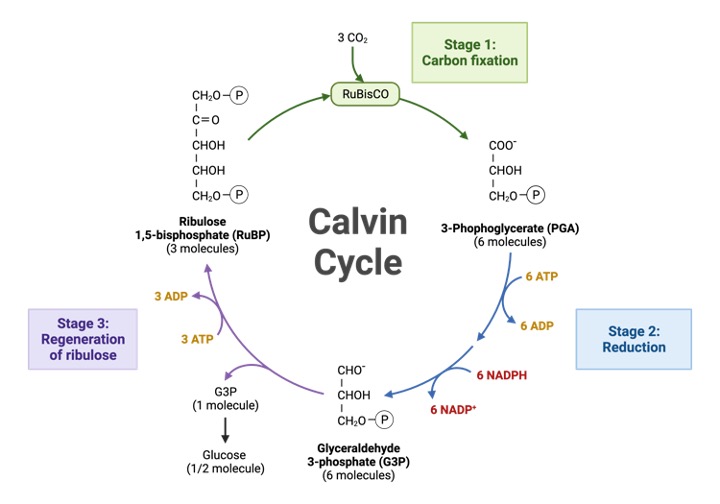Table of Contents
Photosynthesis Definition
Photosynthesis is the process through which plants make their own food using light which gets converted to chemical energy. This energy can be used to carry out various functions and processes. In photosynthesis, hydrogen ion is reduced, along with coenzyme.

Thus, there are two stages in the process, photolysis and calvin cycle. In the presence of light, a reaction occurs, which is
CO2 + H20 → Glucose + Oxygen
Photosynthesis and Photolysis
Photolysis takes place in the chloroplast’s granum, in which light is captivated by the photosynthetic pigment, which is chlorophyll, transforming light to chemical energy. In this reaction, water molecule is broken, where the hydrogen and oxygen split up.
The hydrogen moves to the next stage of photosynthesis, the Calvin cycle, while the oxygen is liberated as by-product. Oxidation of water results in liberation of energy, which will be used up in the Calvin cycle.
Photosynthesis and Calvin Cycle
Calvin cycle takes place in the chloroplast’s stroma. This second step is also called the carbon-fixation stage. The carbon obtained from carbon dioxide while breathing, moves into the cycle. Along with that another compound enters, which is Ribulose bi-phosphate. The 6-carbon compound, generated is not stable and thus is disintegrated into a smaller 3 carbon compound called the glycerate phosphate.

Further glycerate phosphate is broken to triose phosphate, which obtains energy by reduction of a compound by hydrogen acceptor. The last compound of this cycle is Triose phosphate, which can form glucose and can be used up in the respiration process.
Once the glycerate phosphate interact with carbon acceptor to form, ribulose bi-phosphate, which will again interact with carbon dioxide to restart the same cycle. Thus, completing one cycle. The energy which was made in the photolysis process is used up in the calvin cycle.
The glucose molecule formed in Calvin cycle can be used in respiration or to make cellulose and starch which are the requirements of plants.
Limiting Factors in Photosynthesis
Photosynthesis is impacted by the following factors:
- Carbon dioxide: It is very vital factor, due to its requirement in the second stage, which is the Calvin cycle.
- Light intensity: This is a major factor, because if there is no sunlight, photolysis will not take place and light energy will not be converted.
- Temperature: Photosynthesis is impacted by temperature, as there are various enzymes which take part in this reaction and these enzymes will be impacted, due to the temperature of environment and the organism.
Thus, in this manner plant produces glucose, which is used for building complex molecules and even respiration. Plants obtain energy from sunlight to prepare food, being producers and animals require food to survive, which provides energy.







